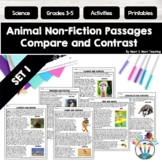47 results
Higher education astronomy scaffolded notes

Concept Compare: Kepler's (and Newton's) Laws of Planetary Motion for Orbits
This concept comparison is between: Kepler's Laws of Planetary Motion, and how they relate to Newton's Laws of Motion and the Law of Universal Gravitation. Bring a calculator!The Concept Comparison Routine is used help compare and contrast key concepts. Specifically, students use like and unlike characteristics and categories shared and not shared by two or more concepts to better understand the overall concept. Students taught using the Content Enhancement routines earned higher total test scor
Subjects:
Grades:
7th - 12th, Higher Education
NGSS:
HS-ESS1-4
Also included in: StayGiant Earth Science Bundle: Astronomy (space exploration)
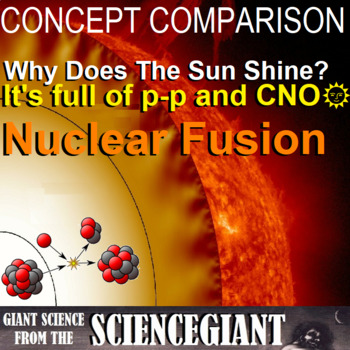
Concept Compare: Why Does the Sun Shine? Thermonuclear Fusion! (p-p and CNO)
This Concept Comparison of Thermonuclear Fusion contrasts proton-proton (p-p) chain reactions, and the "cold" carbon-nitrogen-oxygen (CNO) cycles. Help Ss communicate scientific ideas about the way stars produce elements over their life cycle. Emphasis is on the way nucleosynthesis, and therefore the different elements created, varies as a function of the mass of a star and the stage of its lifetime. As cosmologist Carl Sagan famously said, “We are made of star stuff.” And we literally are! We a
Subjects:
Grades:
8th - 12th, Higher Education
NGSS:
HS-PS1-8
, HS-ESS1-3
, HS-ESS1-1
Also included in: StayGiant Earth Science Bundle: Astronomy (space exploration)

Question Exploration: What Are the Solar Activity Sunspot Cycles?
What are the solar activity sunspot cycles? Sunspots increase and decrease through an average cycle of 11 years. This Question Exploration helps Ss explain how the spotless Sun turns dark, releasing solar flares and coronal mass ejections (CMEs).Question Exploration Routine is an instructional methods that teachers can use to help a diverse student population understand a body of content information by carefully answering a critical question to arrive at a main idea answer. The Concept Comparis
Subjects:
Grades:
7th - 12th, Higher Education
Types:
NGSS:
HS-ESS1-1

Question Explore: What Methods Measure Ultra Space Deep Distances? Parallax
This Question Exploration asks the Essential Question about cosmic distances: What Methods Do Astronomers Use to Measure Ultra Deep Space Distances? (from radar and parallax, to standard candles and Tully-Fisher Relationship used to measure distances to galaxies).Included are two activities on the scale of the universe for student assessment to be used as a warm up or after class review. The first is a classroom formation line-up, the other is a two-inch universe modeling about scale and ratios.
Subjects:
Grades:
7th - 11th, Higher Education
NGSS:
5-ESS1-1
, MS-ESS1-2
Also included in: StayGiant Earth Science Bundle: Astronomy (space exploration)

SOLAR SYSTEM FACT SHEET BUNDLE
This bundle includes 17 pages of 100% editable google documents for your Astronomy or Science class. These google documents have been designed to be used as guided notes when learning about our Solar System. Each google document has over 25 questions about that celestial object and these documents can be used as an internet scavenger hunt or as a study aid. These google documents are designed to follow along with my Ultimate Solar System Google Slides BundleCoversMercuryVenusEarthMarsJupiterSatu
Subjects:
Grades:
6th - 12th, Higher Education, Adult Education

Earth's Motions Bundle w/Key
This bundles includes power point presentations and scaffolded/guided notes for all lessons which include: Earth's Rotation, Earth's Revolution, and Celestial Sphere. Altitude of the Noon Sun lab/activity/investigation and Rotation Revolution Exam. Bonus: sun's path diagram worksheet which can be used in addition to the celestial sphere lesson or a springboard from the lesson. It has 15 questions following the activity. Kindly leave a review of my work, it will help me create future products.
Subjects:
Grades:
6th - 12th, Higher Education, Adult Education, Staff
Types:

Question Exploration: Why Do We Explore Outer Space? Introduction to Astronomy
Why Do We Explore Outer Space? This Question Exploration helps Ss explain What is Astronomy, why have humans done it since prehistory, and why do we do it today (with insight and inspiration from astronomer Carl Sagan and astrophysicist Cheyenne Polius).Question Exploration Routines are instructional methods that teachers can use to help a diverse student population understand a body of content information by carefully answering a critical question to arrive at a main idea answer. Students taugh
Subjects:
Grades:
8th - 12th, Higher Education
Types:
NGSS:
HS-ESS1-4
, MS-ESS1-1
Also included in: StayGiant Earth Science Bundle: Astronomy (space exploration)

Question Exploration: How Did the Moon Form? GIANT IMPACT!
What are the violent origins of the Moon? The most widely accepted scenario for the formation of the Earth–Moon system involves a dramatic collision between the early Earth and some other cosmic body, with the present-day Moon thought to have coalesced from the debris ejected by a giant impact. This Question Exploration helps Ss explore the Giant Impact Theory of lunar formation.The first FRAME is a concept comparison among our Moon Luna, Mars' moons Phobos and Deimos, and the six largest natura
Subjects:
Grades:
8th - 12th, Higher Education
NGSS:
MS-ESS1-4
, HS-ESS1-6
, HS-ESS1-4
, HS-ESS1-5
Also included in: StayGiant Earth Science Bundle: Astronomy (space exploration)
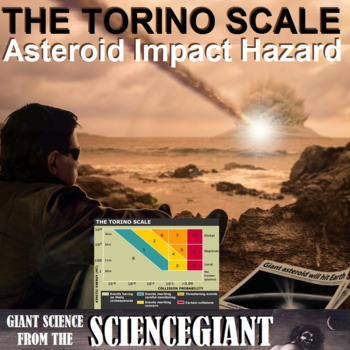
Concept Compare: Small Solar System Bodies (Comets, Asteroid, and Meteors)
A shooting star is not a star - it's not a "star" at all.A shooting star's a meteor, heading for a fall!This Concept Comparisons consists of three Frame Routines to help Ss contrast comets, asteroids, meteoroids, meteors, and meteorites. The final Frame contrasts types of meteorites: stony, iron, and stony-iron. The middle asks the Essential Question: How serious does an asteroid threat have to be before action is taken? To help communicate the hazard, the Torino Impact Hazard Scale assigns an i
Subjects:
Grades:
8th - 12th, Higher Education
Also included in: StayGiant Earth Science Bundle: Astronomy (space exploration)

Components/Objects in the Universe Learning Menu/Choice Board w/ RUBRICS-PDF
************Non-Editable Menu/Choice Board with Rubrics**********
Students can use this menu/choice board to describe components of the universe, including stars, nebulae, and galaxies, and use models such as the Herztsprung-Russell diagram for classification.
Differentiate students learning by allowing them to choose the products that they submit to demonstrate understanding. They must complete a horizontal row, diagonal row of three, or at least one from each column to get the 100 points nee
Subjects:
Grades:
5th - 12th, Higher Education, Adult Education

Celestial Sphere Scaffolded/Guided Notes w/KEY
These scaffolded/guided notes are fill-in-the blanks and reduces the amount of time a student spends writing. Students of all abilities enjoy taking notes this way. **Please note that these scaffolded/guided notes were created specifically to accompany the lesson entitled: "Celestial sphere PowerPoint Presentation". Kindly leave a review of my work; it will help me create future products. Thanks so much! Ms. D. :-)
Subjects:
Grades:
6th - 12th, Higher Education, Adult Education, Staff
Also included in: Earth's Motions Bundle w/Key
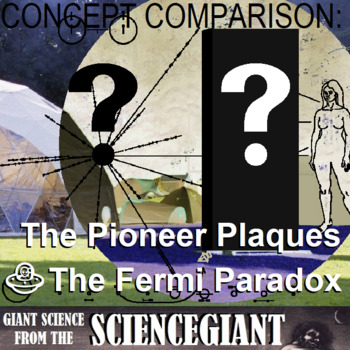
FRAME: The Pioneer Plaques, the Arecibo Message and the Fermi Paradox
It’s quiet out there. TOO quiet. Despite decades of sending signals and spacecraft, despite the math telling us that they exist, no aliens have responded. Are we alone? If advanced alien civilizations are out there, why haven’t we heard from them? Scientists call this Fermi’s Paradox, or The Great Silence. This FRAME Routine helps Ss explain human's first-best efforts to contact extraterrestrials: by mail and by LONG long distance call, with the Pioneer Plaques and the Arecibo Message respectiv
Subjects:
Grades:
6th - 12th, Higher Education
NGSS:
HS-PS4-2
, 4-PS4-3
, MS-PS4-3
Also included in: StayGiant Earth Science Bundle: Astronomy (space exploration)
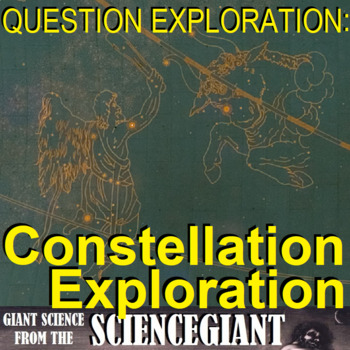
Question Exploration: What Are Constellations and Asterisms?
What are the Constellations and Asterisms? This Question Exploration helps Ss understand how constellations are created, and asterisms are arranged. A constellation is a grouping of stars which form a pattern in the sky that is traditionally named after its apparent form or mythological figure. Modern use of constellations includes identification of general locations for stars and galaxies. Ss are also introduced to the Bortle Scale as a measure of how many stars are visible in an observer's nig
Subjects:
Grades:
5th - 12th, Higher Education
CCSS:
NGSS:
5-ESS1-2
, 5-ESS1-1
Also included in: StayGiant Earth Science Bundle: Astronomy (space exploration)
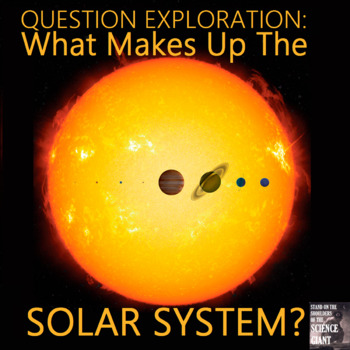
Question Exploration: What Makes Up the Solar System?
This Question Exploration helps students answer What Makes Up the Solar System? What Makes Solar Systems? How Do Solar Systems Form?Question Exploration Routine is an instructional methods that teachers can use to help a diverse student population understand a body of content information by carefully answering a critical question to arrive at a main idea answer. Students taught using the question exploration routine earned higher total test scores than did students taught using the lecture-discu
Subjects:
Grades:
6th - 10th, Higher Education
Also included in: StayGiant Earth Science Bundle: Astronomy (space exploration)
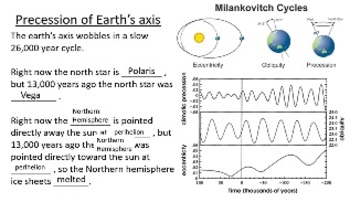
Ice Ages Powerpoint
This is a short powerpoint to introduce and outline the pleistocene ice ages and the effects of the Earth's orbit on the changing climate (Milankovitch cycles). It goes through only the most essential information to eliminate tangents and optimize student's understanding of how the 3 Milankovitch cycles work.
Subjects:
Grades:
7th - 12th, Higher Education, Adult Education
NGSS:
MS-ESS1-4
, HS-ESS2-4
, HS-ESS3-5
, HS-ESS2-2
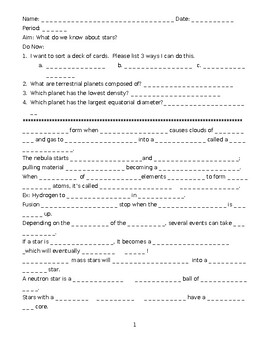
Star Classification Scaffolded/Guided Notes w/KEY
These scaffolded/guided notes are fill-in-the blanks and reduces the amount of time a student spends writing. Students of all abilities enjoy taking notes this way. **Please note that these scaffolded/guided notes were created specifically to accompany the lesson entitled: "Star Classification PowerPoint Presentation." Kindly leave a review of my work; it will help me create future products. Thanks so much! Ms. D. :-)
Subjects:
Grades:
6th - 12th, Higher Education, Adult Education, Staff
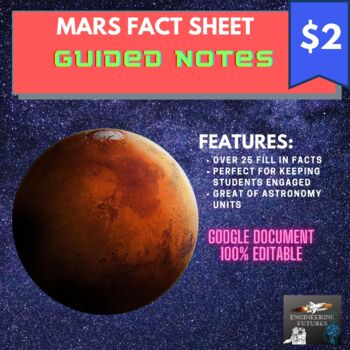
Mars Fact Sheet (Guided Notes)
If you are looking for a great way to keep your students engaged when learning about the planet Mars, then look no further. This google document contains a fact sheet that will serve as guided notes when learning about the planet Mars. This google document is 100% editable so you may customize this sheet to best fit your classes needs. It was designed to be used as Guided Notes for my Planet Mars PowerPoint and there are over 25 questions/facts about Mars Orbital CharacteristicsPhysical Characte
Subjects:
Grades:
6th - 12th, Higher Education, Adult Education
Also included in: SOLAR SYSTEM FACT SHEET BUNDLE

Question Explore: How Celestial Coordinates Locate Deep Sky Objects (RA and Dec)
How is the location of an astronomical object specified with celestial coordinates?This Question Exploration helps Ss explain points of reference on the celestial sphere when using the equatorial coordinate system. Determining the right ascension and declination indicates where to look in the sky to see an object, from the moon to Messier objects. It also introduces a "handy" way for star watchers to measure degrees.Question Exploration Routine is an instructional methods that teachers can use t
Subjects:
Grades:
9th - 12th, Higher Education
NGSS:
HS-ESS1-4
Also included in: StayGiant Earth Science Bundle: Astronomy (space exploration)
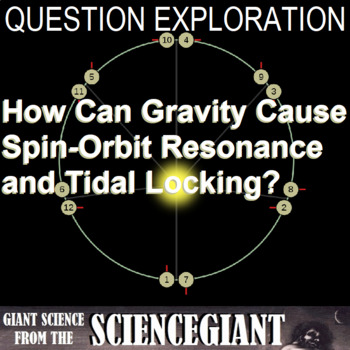
Question Explore: How Can Gravity Cause Spin-Orbit Resonance and Tidal Locking?
How can gravity cause spin-orbit resonance to tidally lock satellites and planetary systems? This Question Exploration helps Ss explain that commensurability is not coincidence, when orbital periods are in a rational proportion. Tidal locking occurs when less distance or more mass can affect gravitational attraction and rotation. The result is resonance, not just a coincidence! Ss explore 3 cases for spin-orbit resonance:the Earth-Moon system (1:1), Sun-Mercury system (3:2), and Venus-Earth (13:
Subjects:
Grades:
9th - 12th, Higher Education
NGSS:
HS-ESS1-4
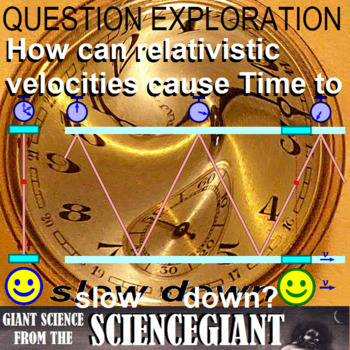
Question Exploration: How Can Relativistic Velocities Cause Time to Slow Down?
How can relativistic velocities cause Time to slow down? This Question Exploration helps Ss explain what does Einstein's theory of special relativity mean in terms of time, and how travelling near the speed of light cause time dilation.Question Exploration Routine is an instructional methods that teachers can use to help a diverse student population understand a body of content information by carefully answering a critical question to arrive at a main idea answer. The Concept Comparison Routine
Subjects:
Grades:
9th - 12th, Higher Education
NGSS:
HS-PS2-1
, HS-PS4-1
, HS-PS4-3
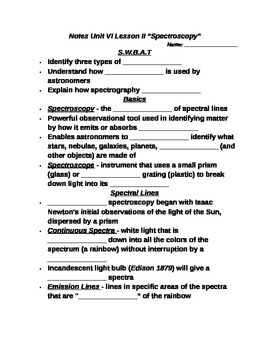
Student Note Guide PPT Unit VI Lesson II "Spectroscopy"
Students can follow along with the Power point lesson Unit VI Lesson II "Spectroscopy."
Terms in Unit VI Lesson II include:
spectroscope
continuous spectrum
emission spectrum
emission lines
absorption lines
Kirchhoff’s Laws
Spectroscopy
atoms
nucleus
neutrons
element
ground state
ionized
excited states
quantized
photons
molecules
astronomydad
Student Note Guide PPT Unit VI Lesson II "Spectroscopy" by astronomydad is licensed under a Creative Commons Attribution 3.0 Unported Lic
Subjects:
Grades:
8th - 12th, Higher Education

Question Exploration: What Are Black Holes?
What is a black hole? Black holes have long inspired the imagination yet challenged discovery. However, we now know much more about these objects and how they form, and can even see how they impact their surroundings. This Question Exploration helps Ss explain how black holes are created from collapsed core of massive star that remains after an explosive supernova, and why these objects of such incredible mass and miniscule volume drastically warp the fabric of space-time.Question Exploration Ro
Subjects:
Grades:
8th - 12th, Higher Education
NGSS:
HS-ESS1-4
, MS-ESS1-2
, HS-ESS1-3
, HS-ESS1-1
Also included in: StayGiant Earth Science Bundle: Astronomy (space exploration)
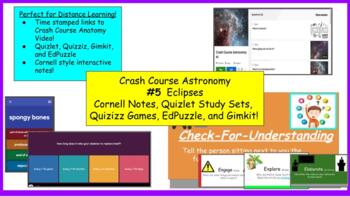
#5 CC Astronomy Eclipses
Includes Kahoot Game, Quizlet Study Sets, Quizizz Games, Gimkits, and the Edpuzzles ideal for a flipped classroom and distance learning!Take advantage of Cornell notes style notes and 5E Lesson Plan! Include I can written objectives, assisted student notes for developing learners, and direct links to a premade Quizlet, Gimkit, Quizizz Game, and EdPuzzle.Includes premade Cornell Style Notes that are timed stamped directly to the Crash Course Series allowing students to review content. Use the pre
Subjects:
Grades:
7th - 12th, Higher Education
Types:
Also included in: Crash Course Astronomy YOUTUBE 1-5 Notes Gimkit/Quizizz/Quizlet/Edpuzzle

Concept Compare and Question Explore: Motion in Space (Rotation and Revolution)
How does the Moon move around the Earth? How does the Earth move around the Sun? How does the Sun move around the supermassive black hole Sagittarius A? This Question Exploration helps Ss answer the question: What are the motions of bodies in space? The Concept Comparison contrasts rotation and revolution of objects.Question Exploration Routine is an instructional methods that teachers can use to help a diverse student population understand a body of content information by carefully answering a
Subjects:
Grades:
7th - 10th, Higher Education
NGSS:
HS-ESS1-4
, MS-ESS1-1
Also included in: StayGiant Earth Science Bundle: Astronomy (space exploration)
Showing 1-24 of 47 results




